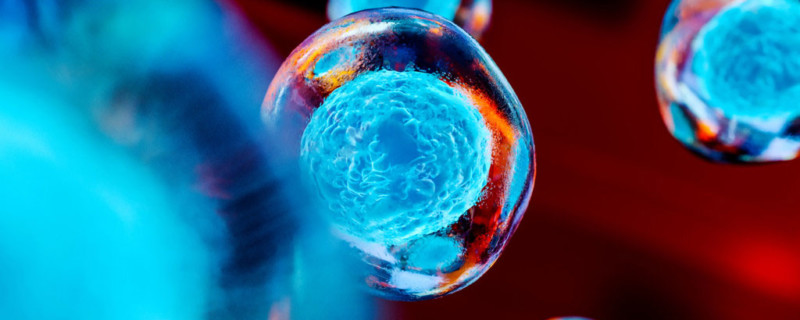
Successful Exosome Production Using Stem Cell Culture in Stirred Tank Bioreactors
Exosomes have been increasing in popularity as a possible therapeutic. They are being explored as an alternative to stem cell therapy for tissue and organ restoration. Exosomes are naturally occurring, mobile, membrane-limited, 30 – 100 nm in diameter, extracellular vesicles containing a large number of proteins, lipids, messenger, and micro-RNAs. They have been shown to play a role in the mediation of intercellular communication, the modulation of immune-regulatory processes, tumor metabolism, and regenerative as well as degenerative processes.
Due to their therapeutic potential, there has been interest in the large-scale production of exosomes. In a recent study, Eppendorf used a combination of the SciVario® twin bioreactor control system and the BioBlu 1c single-use vessels as a model for large-scale exosome production in bioreactors.
Case Study – Production and characterization of human Induced Pluripotent Stem Cells (hiPSC)-derived MSC exosomes
In the study, the authors used BioBLU 1c Single-Use Vessels as bioreactors for human Induced Pluripotent Stem Cells (hiPSC)-derived MSC exosomes production and characterization. They employed the SciVario twin bioreactor control system as a controller device and collagen coated microcarriers as cell culture support. They analyzed the cell growth, viability and metabolic activity (levels of glucose, ammonia and lactate in the medium) as well as the exosomes abundance at different times through CD63 Elisa assay. Furthermore, they isolated, purified and quantified (by CD63 ELISA kit) the exosomes produced from MSC. With this process, they were able to obtain an excellent physiological environment over time.
Using the study, the authors demonstrated the feasibility of producing MSC derived exosomes using this model process with the SciVario twin bioreactor control system and BioBLU 1c Single-Use Vessels. The design of the control system allows for precise manipulation of the cell culture environment, which enabled rapid adhesion and proliferation of human iPSC-derived MSCs to the microcarrier’s surface. By increasing the cell inoculation density, larger amounts of MSC derived exosomes were produced over time. These SciVario twin experiments are preliminary studies and have not yet been optimized to ascertain the maximum exosome production levels. However, the observations can serve as a guideline for further improvements in MSC-derived exosomes isolation, purification, and scale-up protocols. There are also plans to update the SciVario twin, which will allow users to run single-use bioreactors as large as 40 L.
For full study details, please see “Stem Cell Exosome Production on the SciVario® twin, a Flexible Controller for Your Bioprocess Needs”.
Scalability of stem cell derived exosome production
In an upcoming webinar on November 5th, “Stem cell derived exosome production in stirred-tank bioreactors”, Eppendorf looks further at the role of stirred-tank bioreactors and the possibility to control and monitor the production of exosomes. Specifically looking at a scalable process to produce increasing amounts.
In the talk, they will discuss the potential and benefits of stirred-tank bioreactors in the cultivation of stem cells for exosome production. They will also share a newly developed production process that utilized the SciVario twin control system to manage the DASbox® Mini Parallel Bioreactor System in scaling up the production process to 1 L.
The cultivation of stem cells in stirred-tank bioreactors is challenging and requires profound knowledge and precise control of the process. The discussion will cover how to identify the right cultivation method, vessel type, vessel material, and instrument configuration for specific needs. This also includes defining and optimizing important parameters to improve culture results.
To attend the webinar, please see Stem cell derived exosome production in stirred-tank bioreactors